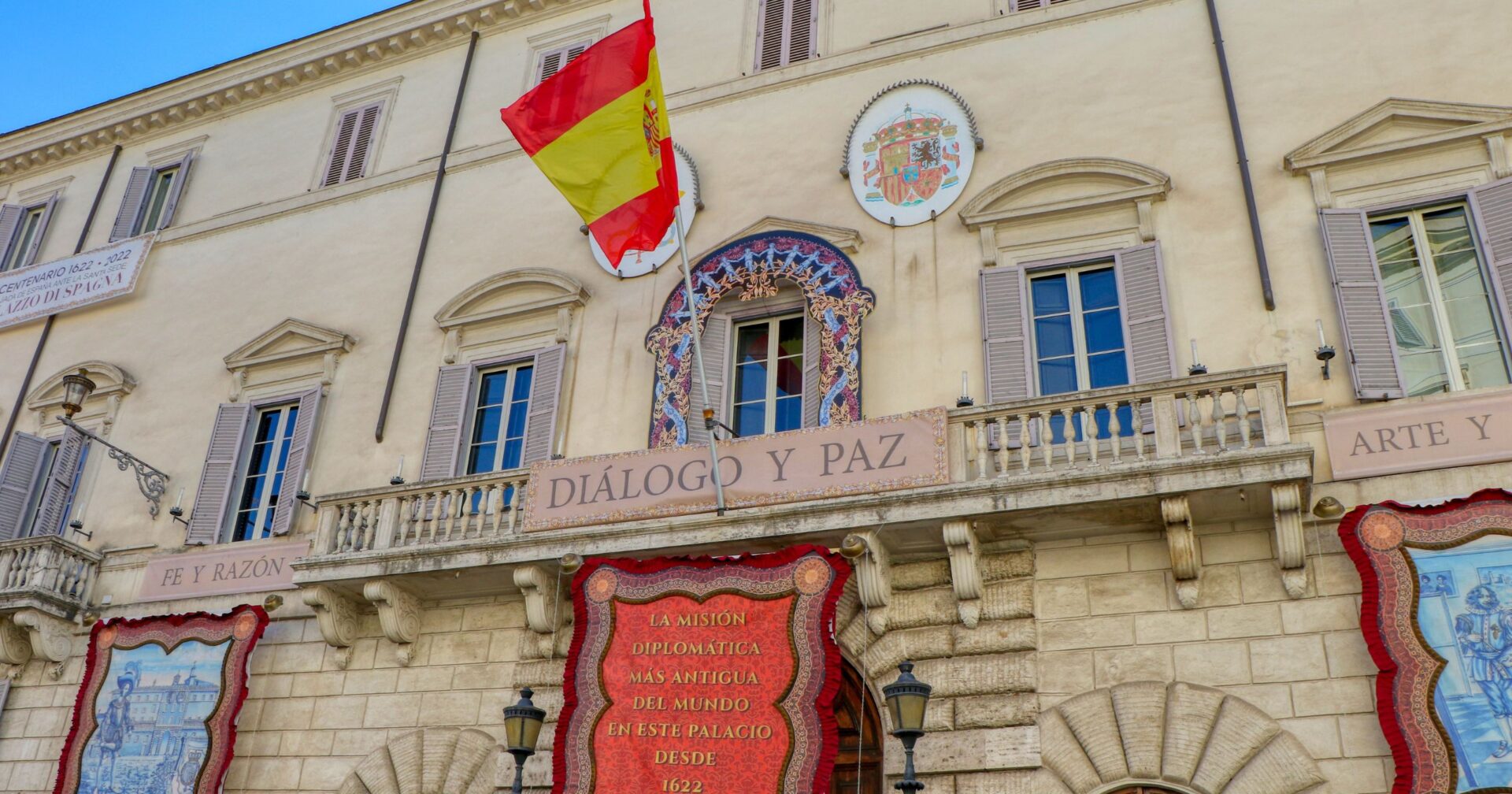Hidden within the bustling streets of Rome’s historic center, the Palace of Spain stands as a magical testimony to the world’s oldest embassy. Established by King Ferdinand the Catholic in 1480, the Embassy of Spain to the Holy See has been an extraordinary alliance, weaving together the threads of history.
The palace graces the renowned Piazza di Spagna, a square that draws its name from the palace itself. This architectural marvel boasts a secret world of hidden courtyards and opulent terraces, covering a remarkable 38,632 square feet, with an additional 118,403 square feet devoted to lush gardens and spellbinding vistas.
Designed by the legendary architect Borromini, the palace’s enchanting main staircase and lobby whisper the secrets of the past, where ambassadors and dignitaries once tread. Throughout the 17th and 18th centuries, the Palace of Spain was the stage for otherworldly festivities, as Spanish ambassadors conjured dazzling spectacles that mesmerized the Piazza di Spagna.
Within the palace’s storied walls, a treasure trove of art and tapestries lies waiting to be discovered. Marvel at the 17th-century gobelin tapestries that once adorned the Bourbon-Orleans family’s castle, or explore the hallowed halls adorned with masterpieces by Federico Madrazo, Vicente López, and Nattier, among others.
In 1857, Pope Pius IX revealed the mystical Column of the Immaculate Conception in Piazza di Spagna, honoring Spain’s unwavering commitment to the Immaculate Dogma.
The Palace of Spain, a living testament to the enchanting legacy of diplomacy and wonder, invites you to embark on a magical journey through time and history!














